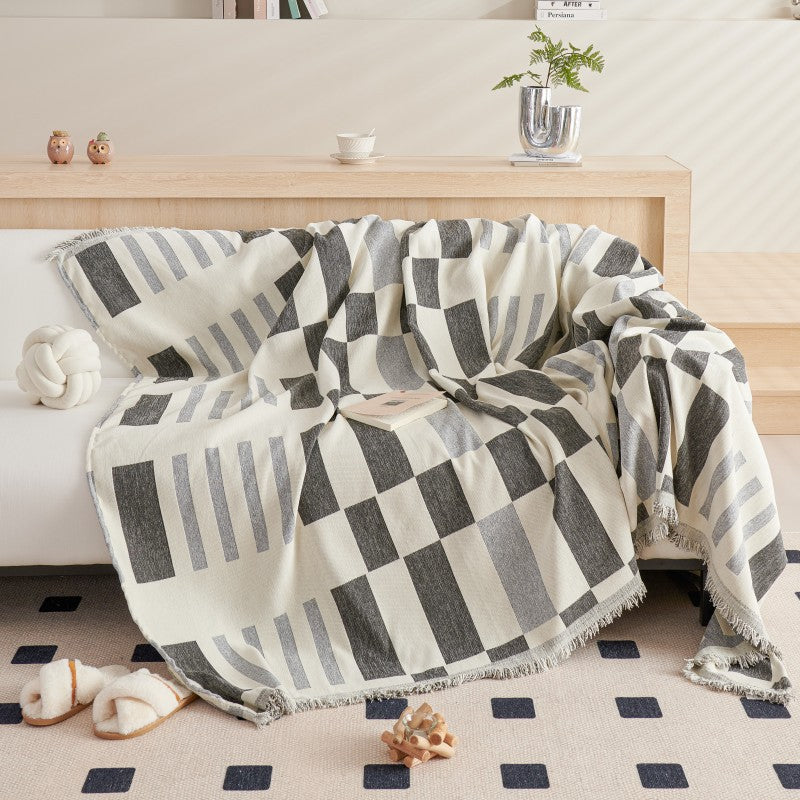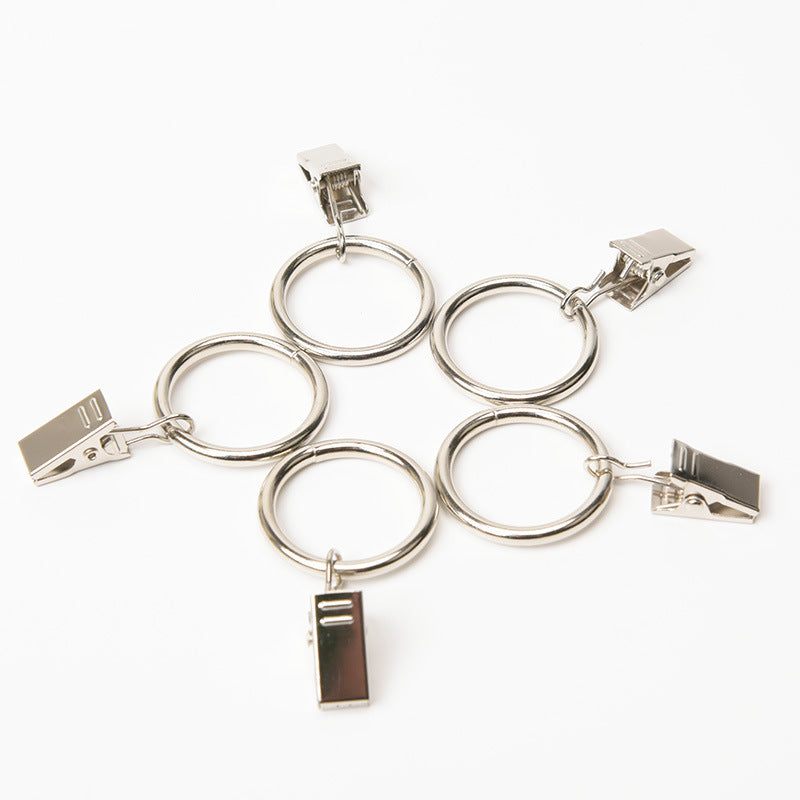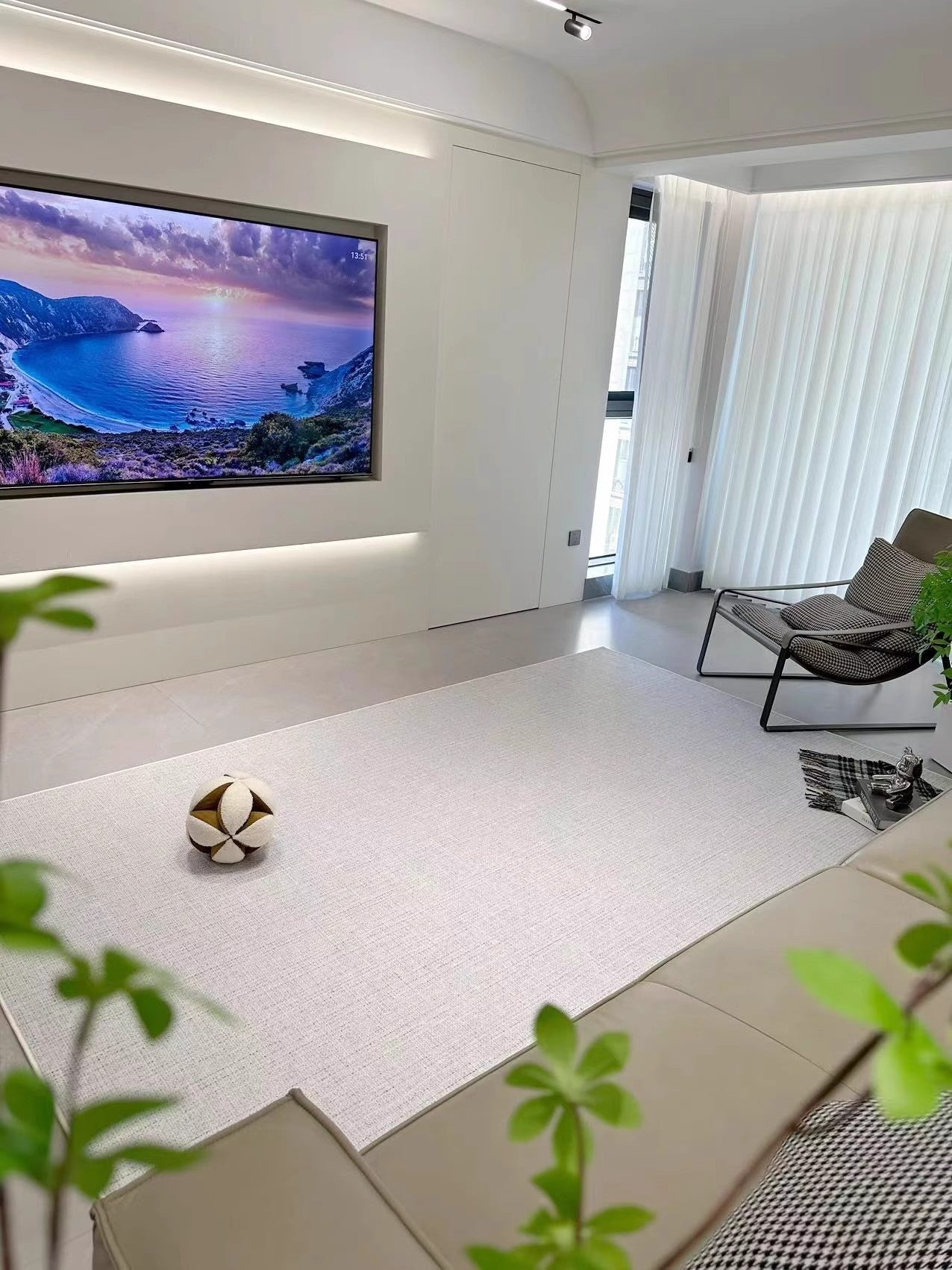Do Thermal Curtains Really Work?
As we seek ways to reduce energy bills and enhance the comfort of our homes, the question often arises: do thermal curtains work? The simple answer is yes; they serve as a game-charger for homeowners battling drafty rooms and seeking energy efficiency.
By installing just the right window coverings, you can retain heat during those biting winters, and keep you warm without continually adjusting the thermostat.
Designed to thwart the chill of cold air and reduce energy bills, these curtains act as stout guardians against the elements. It's not just about maintaining a cozy temperature; they also add a layer of aesthetic appeal to your living spaces.
Moreover, the insulation benefits of thermal curtains contribute to their steadying rise as a top-notch option for energy-conscious homeowners.
Key Takeaways
- Thermal curtains act as a barrier to prevent temperature transfer through windows, contributing to energy efficiency.
- A properly designed thermal drape can curb heat loss and minimize solar heat gain, reducing reliance on HVAC systems.
- The installation of thermal curtains could translate to noticeable savings on utility bills.
- High-quality window coverings offer both aesthetic and practical benefits, enhancing home comfort.
- While thermal drapes are effective, for long-term solutions, addressing overall home insulation may be necessary.
What Are Thermal Curtains?

As winter's chill takes hold or summer's heat looms high, we often seek reliable ways to maintain our home’s comfort.
Enter thermal curtains, a savvy solution for those wishing to enhance their home's insulation. But what exactly are these multitasking pieces, and why are they gaining such widespread acclaim among homeowners?
Defining Thermal Curtains
Thermal curtains are made to create an insulated barrier between your living space and the exterior temperature swings.
They comprise several layers including thermal lining, beginning with a stylish decorative fabric that complements your interiors. Sandwiched between this outer layer and the backing is a thick, heavy insulating middle layer—often composed of foam, flannel, or another insulative textile. Some curtains also feature a reflective vapor barrier as the backing, enhancing their insulative powers.
Together, these materials work synergistically to reduce thermal transference, thereby stabilizing the internal climate within your cozy abode.
Varieties of Thermal Curtains
Our homes reflect our personal styles, and high quality thermal curtains come in an array of types to suit different needs.
Blackout curtains boast a layer that blocks light entirely, perfect for bedrooms or media rooms where darkness is valued.
Insulated curtains focus on reducing energy costs by keeping out unwanted cold or heat.
For those seeking a happy medium, lined curtains provide a lighter weight option that still helps with temperature control, often using a thermal lining tailored to insulate against drafts and heat loss. Whichever style you choose, you're investing in comfort and efficiency.
Related Article: Blackout Curtains Types
How Do Thermal Curtains Work?
Te burning question is - how exactly do these specialized curtains contribute to maintaining comfortable temperatures and reducing energy consumption?
It all hinges on the concept of thermal resistance and the constructive attributes of the curtain's materials themselves.
Understanding R-Value and How It Applies to Thermal Curtains
When we talk about thermal curtains, R-value becomes a critical factor. This measure of thermal resistance indicates a material's ability to curtail heat transfer, providing a numerical value to the level of insulation it offers.
In the context of thermal curtains, a higher R-value means better insulation to reduce the high amount of heat loss against the fluctuations of outdoor temperatures. This is pivotal as it helps to maintain a consistent and efficient indoor environment.
The Role of Materials: What Makes a Curtain "Thermal"?
Peering into the composition of thermal curtains, it's the materials that take center stage. These are not your conventional decorative fabrics but rather robust combinations designed to trap air and form an insulating barrier.
Typically, an insulating material, such as foam or thick batting, is sandwiched between the decorative layer and a lining, effectively boosting the curtain's thermal properties.
The ensemble of these layers is to thwart unwanted heat entry or escape, leveraging their R-value to provide additional thermal resistance over that of traditional curtains.
Comparing Thermal Curtains to Traditional Window Treatments
When compared to traditional window treatments, thermal curtains are at the forefront of innovation in home insulation. The table below offers a R-value comparison, highlighting the stark differences between the insulating capabilities of thermal curtains and conventional window dressings:
| Window Treatment Type | Average R-Value | Effectiveness in Heat Transfer Reduction |
|---|---|---|
| Thermal Curtains | 3-5 | High |
| Traditional Curtains | 1-1.5 | Low |
| Standard Blinds | 1.5-2 | Moderate |
The thermal resistance they provide makes them an excellent, energy-efficient alternative to their traditional counterparts. A window may have a modest insulation rating on its own, but with the addition of thermal curtains, you can significantly decrease the undesired heat transfer that leads to energy loss.
Benefits Of Thermal Drapes

When we consider the many facets of home improvement, energy savings and comfort often top the list of priorities for us as homeowners. Thermal curtains emerge as a standout option to address these needs
Let’s explore the range of benefits they bring to our daily lives.
Energy Savings
With an ever-growing focus on energy efficiency, it’s clear why thermal curtains are so valuable. Their design aids in maintaining optimal indoor temperatures, reducing the workload on our heating and cooling systems.
As a result, we can observe a significant dent in our energy bills, with some estimates noting that thermal curtains can reduce heat loss by up to 25% in cooler months.
Cost Savings
Aligned with energy savings, the reduction in utility bills is another financial silver lining for homeowners. By curbing the need for excessive heating or air conditioning, we position ourselves for long-term savings.
It’s an investment that pays back by keeping our energy bills in check and the coin in our pockets.
Improved Comfort
Thermal curtains help in creating a cozy sanctuary away from the harsh temperatures outside. Whether it’s a sweltering summer or a blustery winter, these curtains work diligently to keep you warm or cool, and reduce heat loss, providing year-round comfort. This makes for an environment where we can relax, work, and play in peace.
Reduced Drafts
One of the immediate comforts we notice upon installing thermal curtains is the absence of cold drafts. These window treatments are exceptional at sealing off any currents that try to sneak in, eliminating unwelcome chills and reinforcing the thermal integrity of our spaces.
Light Control
Whether we seek to block out the early morning glare or soften the harsh afternoon light, thermal curtains offer excellent light control. With options ranging from room-darkening designs to full blackout capabilities, these curtains provide the flexibility to create the perfect lighting for any situation.
Noise Reduction
Beyond their thermal merits, these curtains also excel in noise reduction, thanks to their thick, insulating layers. This feature is a godsend for those of us residing in busy neighborhoods or near bustling streets, as it allows for quieter, undisturbed indoor environments.
| Feature | Functional Benefit | Comfort Benefit |
|---|---|---|
| Insulation | Less reliance on HVAC | Stabilized indoor temperatures |
| Energy Efficiency | Lower utility costs | More sustainable living |
| Draft Reduction | Sealing of air leaks | Elimination of cold spots |
| Light Control | Adjustable room lighting | Enhanced sleep quality |
| Noise Dampening | Sound absorption | Peaceful, quiet ambiance |
Thermal curtains are an embodiment of where function and aesthetics can coalesce to enhance our home living experience. They stand as a testament to the sort of simple changes that can have a profound impact, and have us relishing the coziness, financial savings, and serenity of our enhanced living spaces.
Insulated Curtains Limitations and Considerations
When we consider adopting thermal curtains as a means to improve our home's energy efficiency, it's essential to recognize that their effectiveness can be nuanced and impacted by several determinants.
While they offer a bevy of benefits, there are some inherent limitations and considerations that may affect their overall performance.
Factors Affecting Effectiveness
The type of window, seal integrity, and curtain fit all play pivotal roles in the efficacy of thermal curtains. Diverse window types have varying levels of natural insulation, which can either complement or reduce the curtains' efficiency.
Moreover, the seal integrity around the window frame is crucial; even the best thermal curtains can't compensate for air that leaks through poor seals.
And lastly, the overall curtain fit is fundamental; if curtains aren't properly sized, they can't form the necessary barrier to impede heat transfer. For thermal curtains to work at their optimum capacity, these factors must be all addressed properly.
Potential Downsides
Just as with any home improvement investment, thermal curtains come with their own set of potential drawbacks. The initial cost could be substantial, depending on the quality and design chosen.
Maintenance can also be more demanding given their multi-layered composition, which may require more careful washing or periodic professional cleaning.
Additionally, thermal curtains, particularly those with light blocking qualities, can impede natural light, necessitating a balance between energy efficiency and the desire for daylight. It's also worth noting that while thermal curtains serve as a protective layer in your home insulation, they may not solve all issues related to heat loss, especially in cases of compromised window type or seal integrity.
Thus, while they are an excellent short-term solution, they may need to be part of a more substantial, long-term strategy for insulation and air sealing.
| Consideration | Impact on Thermal Curtains |
|---|---|
| Window Type | Affects initial insulation baseline |
| Seal Integrity | Crucial for preventing air leaks |
| Curtain Fit | Essential for creating an effective insulative barrier |
| Cost | Significant initial investment |
| Maintenance | Requires attentive care due to material complexity |
| Light Blocking | May reduce access to natural daylight |
Choosing the Right Thermal Curtains

When you're looking to make your home more comfortable and energy-efficient, selecting the right thermal curtains is a smart move. It's not just about choosing curtains that look good; it's about finding ones that will serve your specific needs and integrate seamlessly with your climate, budget, and window size.
Finding Curtains for Your Climate
Where you live has a big impact on the type of thermal curtains you should choose.
If your environment is predominantly cold, you'll want curtains with a higher R-value for better insulation.
In hot summer, look for curtains with a reflective backing to ward off the sun's heat. Ensuring your curtains are suited to your climate will optimize your home's energy efficiency, making you comfortable year-round.
Working With Your Budget
While high-quality thermal curtains are a wise investment, we understand that everyone has different budget constraints.
Thankfully, there are options across a range of price points. Don't compromise on quality; instead, look for the best materials and insulating properties you can afford.
Remember, the energy savings they provide can also offset some of their initial cost over time.
At Doclewe, all thermal curtains are starting at $26.99. Plus, our curtains are available in grommet, ring top for easy installation.
Matching Curtains to Your Window Size
Another crucial factor in choosing the right thermal curtains is ensuring they fit your window size perfectly. Curtains that are too small won't provide sufficient coverage, allowing heat to escape or enter.
Conversely, curtains that are too large may look ungainly and won't hang properly. Measure your windows accurately and consider customization options for the perfect fit.
Curtain Guidelines According to Your Needs
| Need | Material | Lining | Thickness | R-Value |
|---|---|---|---|---|
| Cold Climate | Heavy-duty fabrics like velvet or suede | Thermal or fleece lining | Thick | High |
| Hot Climate | Light-reflective fabrics | Reflective lining | Medium to thick | Medium to high |
| Tight Budget | Cotton with polyester batting | Standard lining | Medium | Medium |
| Large Windows | Durable fabrics that don't sag | Multiple layers | Extra thick | High |
Shop Custom Thermal Curtains at Dolcewe
As homeowners, we're always seeking ways to bolster our home's energy efficiency and personal style. That's where Dolcewe steps in, offering thermal curtains that deliver both. With custom sizing starting from $26.99, our drapes are designed to fit perfectly, ensuring that no draft disturbs your sanctuary and that the benefits of insulated curtains are maximized, leading to greater energy savings.
Custom Size For Perfect Fit
Every window has its unique dimensions, and with Dolcewe's commitment to custom size offerings, you'll find that perfect seal to enhance the energy efficiency of each room. No more ill-fitting curtains that let precious warmth escape or unwanted heat enter.
Our fullness customization ensures that these curtains aren't just another home accessory, they're as efficient as they are elegant.
Our curtains are sold as single panels. If you have questions about ordering thermal drapes, don't hesitate to contact us.
Starting $26.99
Fusing practicality with affordability, Dolcewe's DIY thermal curtains begin at an accessible price point, inviting homeowners to dive into energy conservation without a hefty upfront investment.
Not only do you get a drape that complements your decor, you also invest in a product that contributes continuously to lowering your energy bills. As prudent homeowners, we appreciate quality that doesn't break the bank.
Shop your perfect custom thermal curtains today and enjoy extra 10% off first order!
FAQ
Do thermal curtains really work?
Yes, thermal curtains do work by providing an extra layer of insulation at your windows. They help maintain consistent indoor temperatures, reduce the demand on heating and cooling systems, and ultimately can lower utility bills. Installing thermal windows can contribute to energy efficiency and potentially decrease heat loss through your windows.
What exactly are thermal curtains?
Thermal curtains are window coverings designed with multiple layers of material that provide insulation. They often include a decorative outer layer, a thick central insulating material, and sometimes a reflective vapor barrier. They are crafted to help retain heat during winter and keep heat out during the summer months.
Are thermal curtains worth it?
Yes, thermal curtains are worth it as they can help reduce heat loss by up to 25% and solar gain by 33%, thereby improving energy efficiency and potentially lowering utility bills
Do thermal curtains help keep heat out?
Yes, thermal curtains help keep heat out. They act as a barrier between the outside elements and the indoors, blocking solar gain and reducing the amount of heat that penetrates windows during summer
Do thermal curtains need to touch the floor?
Yes, thermal curtains usually need to touch the floor for the best insulation effect. However, the exact length can depend on various factors, such as the presence of a radiator under the window or personal preference. Some designers suggest that curtains should lightly brush or "kiss" the floor, while others recommend keeping them about 1/4" off the floor to avoid collecting dust
























